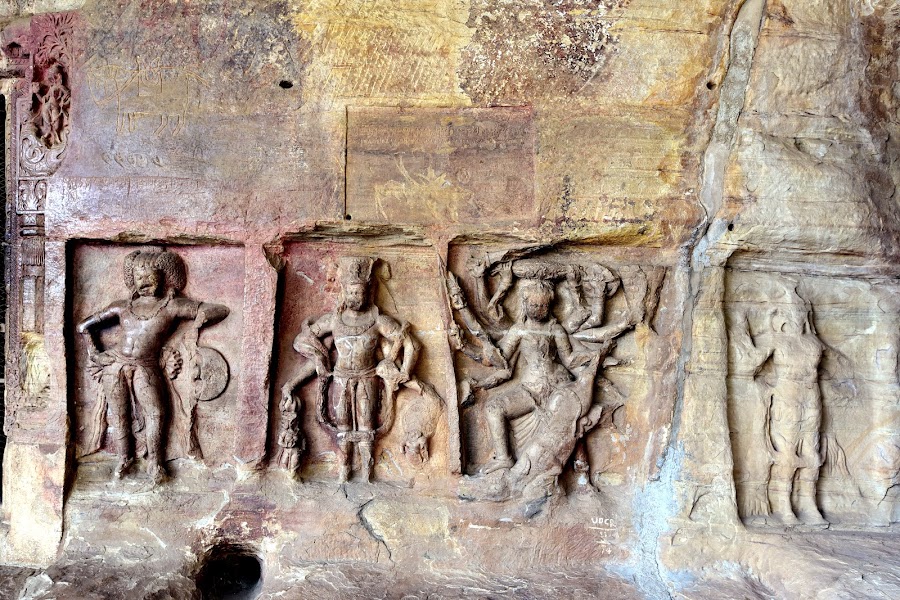
Udayagiri Caves
Sanchi, India
- Admire the Varaha panel sculpture.
- Explore the ancient rock-cut caves.
- Learn about Hindu and Jain mythology.
- Photography of the intricate carvings.
- Study the Gupta-era inscriptions.
Known for:
Description:
Located a short drive from Sanchi, the Udayagiri Caves are a complex of rock-cut sanctuaries dating back to the early centuries CE. These caves showcase Gupta-era art and religious beliefs, primarily Hinduism and Jainism. The site features intricate carvings, including the famous Varaha panel depicting Vishnu in his boar avatar rescuing the earth goddess. Visitors can explore numerous caves, each with unique sculptures and inscriptions that offer insights into the religious and artistic traditions of the time. The serene atmosphere and historical significance make Udayagiri Caves a must-visit destination for history buffs and art enthusiasts.
History:
The Udayagiri Caves were primarily created during the Gupta period (4th-5th centuries CE), a golden age for art and culture in India. The site served as a religious center, with various caves dedicated to different deities and religious figures. The patronage of the Gupta rulers, particularly Chandragupta II, played a crucial role in the development of the caves. Inscriptions found within the caves provide valuable information about the political and religious landscape of the era. While predominantly Hindu, the presence of Jain caves indicates religious tolerance and coexistence during this period. Over the centuries, the caves were abandoned and rediscovered, becoming an important archaeological site that sheds light on ancient Indian history and art.